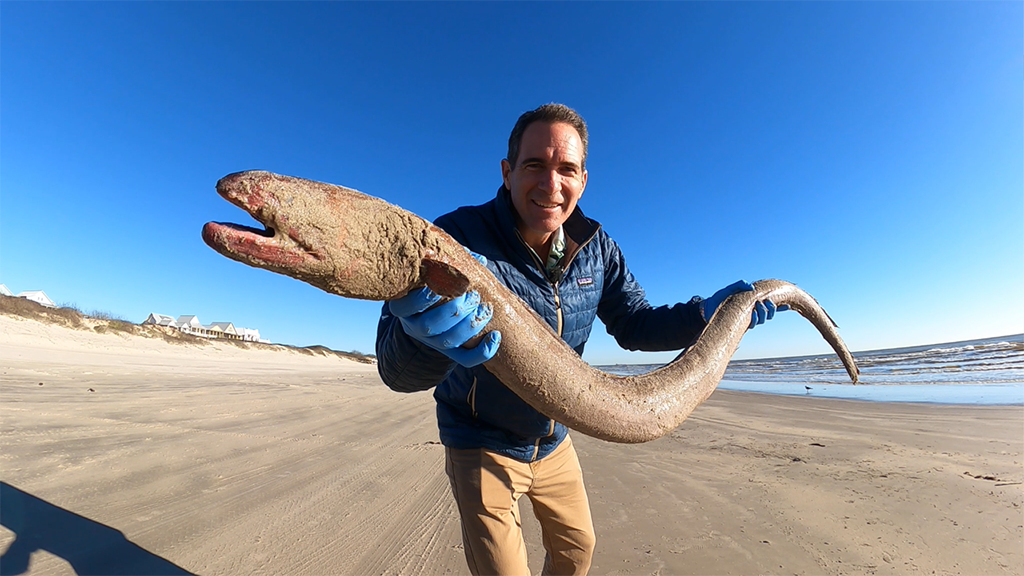by John Jefferson
I’ve spent a lifetime of beachcombing from Gilcrest to South Padre, but I’ve never even found a note in a bottle.
Riding with the late Billy Sandifer a few years ago on Padre Island, we did find four dead bull sharks whose fins had been cut off by poachers, rendering the sharks unable to swim. Despicable!
But I’ve never found anything like Jace Turner discovered on Mustang Island on January 23.
Mr. Turner is director of the Mission-Aransas Reserve at the University of Texas Marine Science Institute in Port Aransas. When he is on the Gulf beach, it’s more than mere beachcombing – that’s his job.
What he found was identified as a dead American eel that had washed up on the beach. See photo.
From what I have learned from research, American eels are born in the sea. Some are born in the Sargasso Sea off the coast of Florida and the Carolinas, bounded on the west by the Gulf Stream. And they hide in the sargassum seaweed until they are capable of swimming to freshwater, often in Texas. They live in freshwater until reaching maturity, at which time they start heading back to the sea to spawn, dangerously negotiating the dams. They die sometime after that.
The females are usually larger than males, and the one Turner found was presumed to be a female. There was no physical evidence of how it died, so the presumption is it spawned and died naturally.
Regular readers of this column might recall a column I wrote a while back about American eels. The Texas state record American eel was caught by Bryan Swofford in September 2001 in what was then Town Lake. It’s now Lady Bird Lake. He caught it on a shrimp. The eel weighed 6.45-pounds and was 44-inches long. The one Turner found on the beach was estimated as between four and five feet long. He also guessed its weight at “about six pounds.”
That same column also mentioned my young friend, Jon Gray, Jr. His father is the retired Texas game warden major. Jon caught one in the San Marcos River on spinning gear using a jig with a crawfish trailer. It was not unusually large. He released it back into the San Marcos. Jon is an accomplished angler, and the only person I know who has ever seen an eel in freshwater.
Information on whether eels are edible is rare. Their diet usually consists of crustaceans, so eels ought to be palatable. One man from Louisiana is said to have tasted eel. In Japan and other parts of the orient, eels are considered a delicacy, often becoming sushi.
According to the book, “Fishes of the Gulf of Mexico,” by Hoese and Moore, there are about fifteen different eels in the Gulf. Only the Moray eels are said to be aggressive toward humans.
Personally, if I encountered any eel the size of the one pictured, I would give it the portion of the Gulf I had been occupying.
JJ





